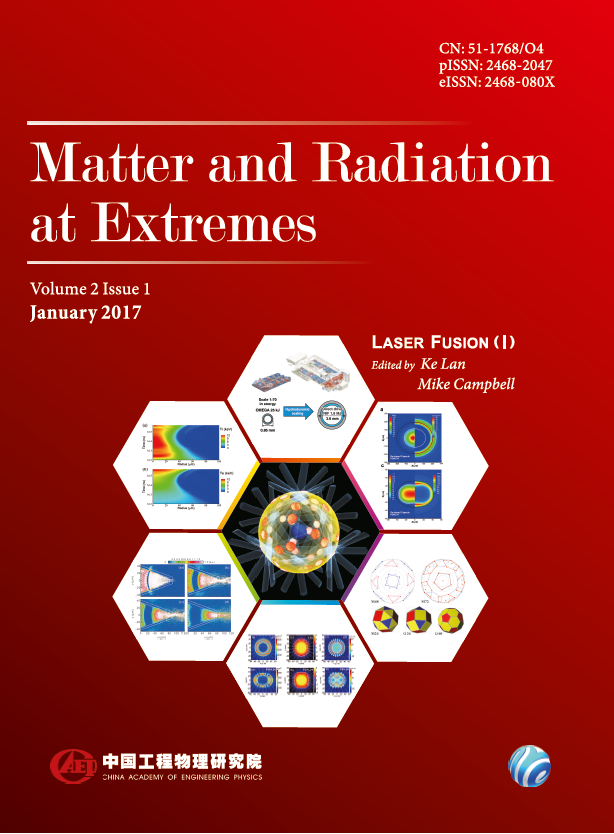Matter and Radiation at Extremes, 2017, 2 (1): 9, Published Online: Jan. 17, 2018
Effects of mode coupling between low-mode radiation flux asymmetry and intermediate-mode ablator roughness on ignition capsule implosions
Mode coupling Mode coupling Low-mode drive asymmetry Low-mode drive asymmetry Intermediate-mode capsule roughness Intermediate-mode capsule roughness Ignition capsule implosion Ignition capsule implosion
Abstract
The low-mode shell asymmetry and high-mode hot spot mixing appear to be the main reasons for the performance degradation of the National Ignition Facility (NIF) implosion experiments. The effects of the mode coupling between low-mode P2 radiation flux asymmetry and intermediate-mode L= 24 capsule roughness on the implosion performance of ignition capsule are investigated by two-dimensional radiation hydrodynamic simulations. It is shown that the amplitudes of new modes generated by the mode coupling are in good agreement with the second-order mode coupling equation during the acceleration phase. The later flow field not only shows large areal density P2 asymmetry in the main fuel, but also generates large-amplitude spikes and bubbles. In the deceleration phase, the increasing mode coupling generates more new modes, and the perturbation spectrum on the hot spot boundary is mainly from the strong mode interactions rather than the initial perturbation conditions. The combination of the low-mode and high-mode perturbations breaks up the capsule shell, resulting in a significant reduction of the hot spot temperature and implosion performance.
Jianfa Gu, Zhensheng Dai, Shiyang Zou, Wenhua Ye, Wudi Zheng, Peijun Gu, Shaoping Zhu. Effects of mode coupling between low-mode radiation flux asymmetry and intermediate-mode ablator roughness on ignition capsule implosions[J]. Matter and Radiation at Extremes, 2017, 2(1): 9.



